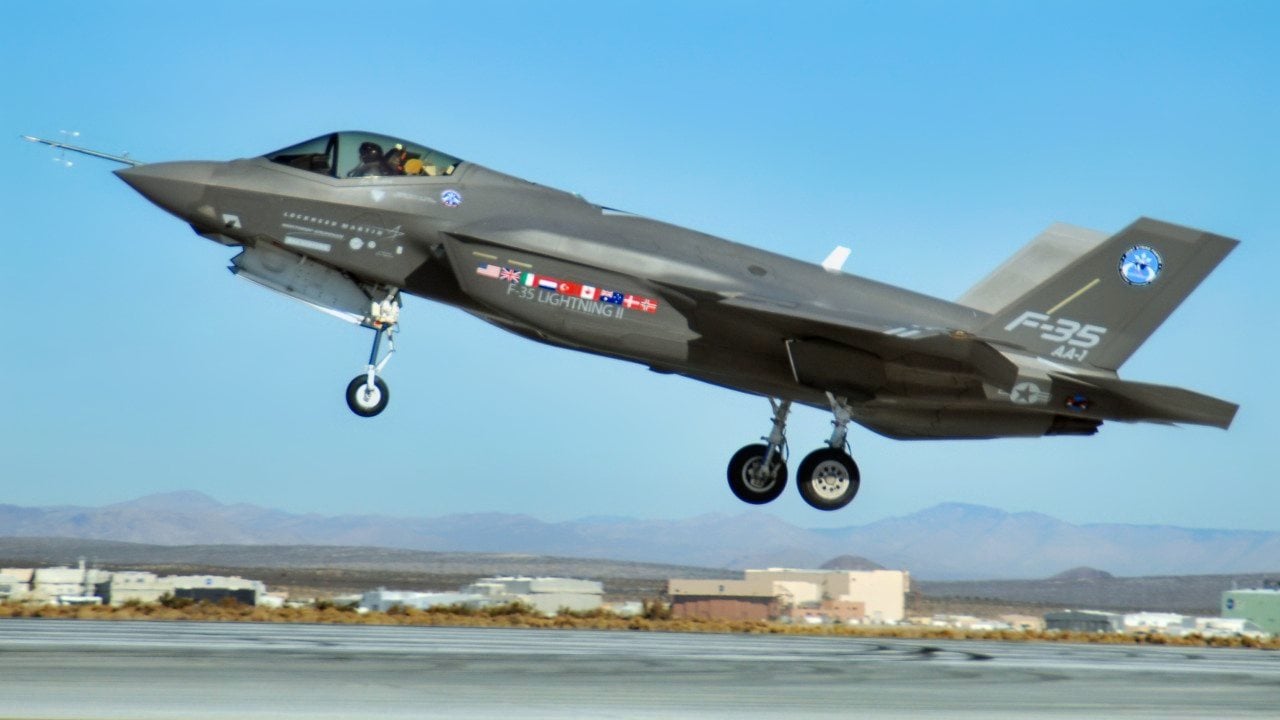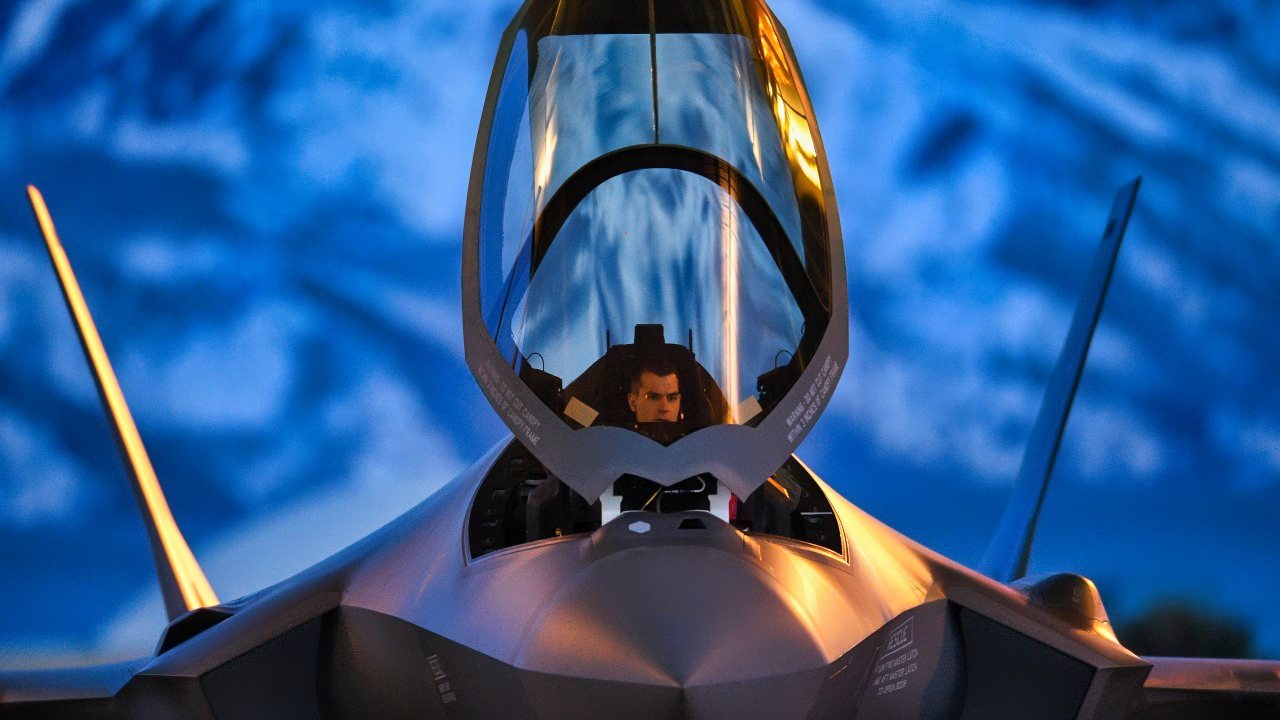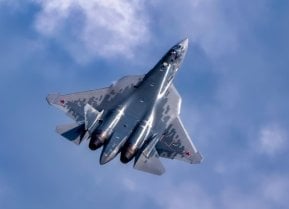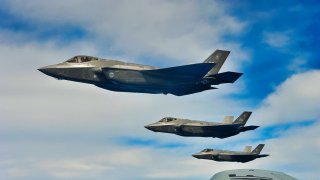Range: The F-35 Might Have One Flaw That Can't Be Easily Fixed
The F-35 stealth fighter might be one of the most dominant fighter jets ever. However, does the Joint Strike Fighter have the range needed to take on nations like China and Russia?
F-35 Range Considerations - Lockheed Martin’s F-35 Lightning II is the premier fifth-generation fighter of all three tactical aviation services: the Air Force, Navy, and Marine Corps. Its history has been plagued by some challenges, particularly cost and timing overruns; however, since its employment, it has matured into a safe, functional, and capable aircraft.
Despite its current success, there is always room for improvement. In particular, critics of the F-35 have long noted its rather short range. The A and C variants, employed by the Air Force and Navy respectively, have ranges of 1,200nm while the B variant or the Marine Corps can only manage 900nm. By comparison, the F-22 Raptor can reach 1,600nm while the F/A-18 Super Hornet maxes at 1,800nm. In blue water operations over the open ocean or in the vast reaches of a potential Indo-Pacific battlefield, every extra mile counts.
So, does the F-35 need a longer reach? While more range is always desirable, any change or upgrade comes with associated costs which must be carefully measured.
F-35 Range Challenges?
The primary threat facing the F-35 and raising questions about its range is a potential conflict with China.
In addition to the long distances involved in a war in East Asia, enemy defenses would add another layer to the challenge. China has invested in conventional cruise missiles and medium to long-range ballistic missiles with an eye on denying the U.S. Navy, particularly its carriers, the freedom to operate in the South China Sea and beyond.
For Air Force F-35s based in Japan and Korea, the transit to a potential flare-up around Taiwan would put them at the bleeding edge of their operational range. Every variant of F-35 can have its range extended by aerial refueling, however, these tanker aircraft are incredibly vulnerable and the farther they can be kept from any frontline conflict the better.
F-35s can utilize their stealth capabilities to evade detection, but that does no good if the tanker that got them there or the carrier they need to return to are destroyed.
Range Solutions for the Joint Strike Fighter
Each of the forces is exploring a solution to increase the range of their F-35s and allow them to operate within any Anti-Access/Area Denial zone China attempts to create while keeping other assets safe.
The Marine Corps is pursuing their Force Design 2030, a multi-pronged approach to reorient the force to more effectively fight against peer and near-peer competitors, particularly in island chains in and around Southeast Asia. As far as the F-35 is concerned, this means establishing expeditionary advanced base operations with the bare minimum necessary to get their F-35s close enough to engage the adversary while protecting the rest of their supply chains.
Meanwhile, the Air Force and Navy are looking at other options for their Lightnings. As early as 2019, the USAF commissioned contractors GE and Pratt and Whitney to produce an adaptive engine, which changes its configuration based on flight parameters to make the engine more efficient. Currently, GE has completed their initial design, the XA100 with Pratt’s XA101 not far behind. USAF and company estimates hope that these engines will produce 25% more fuel efficiency, allowing the F-35 to go farther and stay on station longer.

In addition to better fuel efficiency, new engines would grant many other benefits, from increased thrust to better cooling to more electrical output. The planned life of the F-35 includes many updates and upgrades, primarily in avionics and sensors. These usually require more power and cooling and the current F135 engine is already struggling to keep up. A new engine would, therefore, have a multifold benefit to the F-35's capabilities.
On the Navy side of the house, the MQ-25 Stingray is coming closer to fruition. The Stingray is a carrier-based unmanned refueling system with some stealth capabilities. While F/A-18s are capable of carrier-borne refueling, the introduction of the Stingray will free up these assets for other crucial missions as well as potentially extend the range of aircraft into contested airspace without risking big, vulnerable tankers.

All three services are attempting to extend the range of the F-35 and allow it to carry out its missions without jeopardizing other assets. Whether this means deploying from smaller, less visible bases, getting new engines, or leveraging unmanned refueling drones, there is no doubt planners acknowledge the need to improve this aspect of the Lightning.
Ultimately, it remains to be seen which avenue each service pursues as they offer their benefits and drawbacks. Regardless, work continues to make the F-35 the premier fifth-generation fighter of the U.S. air services.
About the Author
Maya Carlin is an analyst with the Center for Security Policy and a former Anna Sobol Levy Fellow at IDC Herzliya in Israel. She has by-lines in many publications, including The National Interest, Jerusalem Post, and Times of Israel. You can follow her on Twitter: @MayaCarlin.
All images are Creative Commons.


